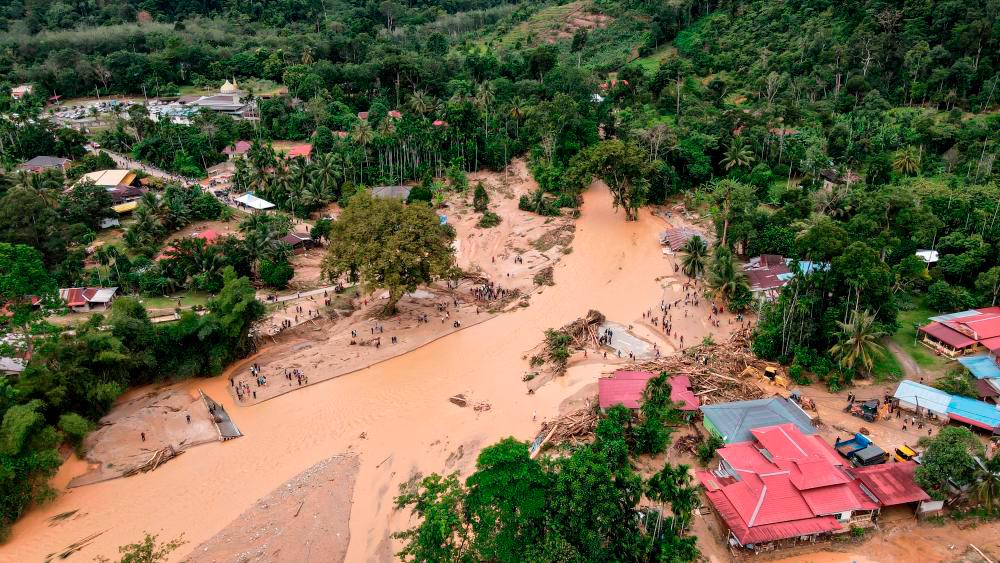EVEN before civilisation, lands that are now known as Malaysia faced floods and droughts. Climate phenomena such as El Nino and La Nina that were officially recognised a few decades ago were seasonal occurrences that our forests had withstood.
The argument that deforestation is not linked to disasters such as floods and water crises is damaging the credibility of our education system. Science clearly points out the risks and negative impacts of deforestation. What do we teach our young generation?
Recently, we have heard of a new scapegoat of land use change management – the “water head” or kepala air – being repeatedly used in an unprecedented manner. Rapid increase in water volume will build pressure and when the materials that are holding up the rising volume of water fail to withstand the increase in pressure or “head” (a term used to measure the height of a liquid that is being held behind), the sudden release of such a large volume of water does give impact to anything that blocks its movement downwards due to gravity.
Similarly, land clearance upstream will cause the “delay” function orchestrated by forests to be removed.
The recent Baling floods were pinned on the “water head” situation. It was interesting to read the arguments that eventually made the government machineries at federal and state look incompetent.
Gunung Inas forest was partially logged. Eventually, to protect the naked soil, the state government wanted to plant rubber trees and an Environment Impact Assessment was done for this process. Ironically, rubber trees were replaced with durian trees to “protect and rehabilitate” the forest that was destroyed much earlier and allow the new “Musang King Forest” to provide income to the state government.
All that has green leaves does not form a natural forest. A natural virgin forest has a complex relationship with all its inhabitants. Tropical rainforests rely heavily on “rain” to sustain. Forests trap rainfall at all levels and when it reaches the ground, the peat soil acts as a sponge to absorb this excess water. This is the “delay” process that forests carry out and, with the help of wetlands, freshwater swamps
and natural floodplains, the natural process minimises risk of floods.
Unfortunately, when land use is changed, the roles played by natural forest and its network of natural flood prevention are lost. Many monocrop plantations are imposing high risk on flood occurrence. Seasonal rainfalls are increasing flood occurrences and the responses by authorities are knee-jerk like.
We wonder what happened to all the super computers that are supposed to model climate and flood disasters.
Just like the Pasir Gudang pollution incidents, the Baling floods compelled the government to form a committee and find out the reasons why lives and livelihoods were lost. Now, the government and the committee that investigate the Baling floods must go back to the baseline, which is the unlogged Gunung Inas forest and its secondary and tertiary surroundings.
The “super computers” can actually play a role in modelling the scenarios before and after logging as well as rubber tree and Musang King tree scenarios.
All the approval processes as well as relevant individuals involved must be interviewed by the committee to ascertain why the Baling floods occurred. The investigation results by the committee must be made public to allow comment and scrutiny. This additional information from the public and stakeholders must be included in the final report.
Nature does not wait for men. Climate change is an adjustment process that the nature is undertaking. Human arrogance can defy the facts of science. Unfortunately, when the nature reboots itself, we humans may not be a parameter in the future.
“Man’s enemies are not demons, but human beings like himself.” – Lao Tzu
This article is contributed by Piarapakaran S, president of the Association of Water and Energy Research Malaysia (Awer), a non-government organisation involved in research and development in the fields of water, energy and environment.














